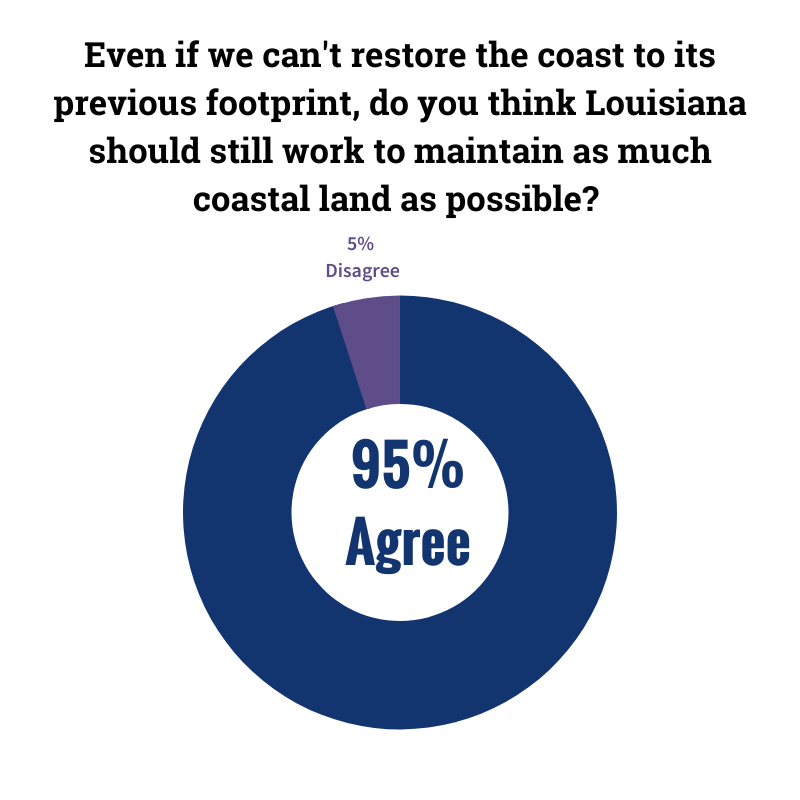View From Above: Bohemia Spillway and Mardi Gras Pass
The scale of Louisiana’s land loss crisis – and the work being done to preserve it – can be hard to grasp from the ground. One of the best education and advocacy tools for coastal restoration is to fly people over the coast to see the scale and impacts of our land loss crisis. While we can’t bring everyone up on a plane, we can do our best to bring that perspective to you here. In this blog series, we are following a virtual flyover path down the lower Mississippi River and looking at past and future projects impacting our coastline. Check out the other posts in this series.
Welcome back to our flight down the final miles of the Mississippi River! If you’ve followed the series, we’ve already seen the legacy of MRGO and the Central Wetlands, the home of upcoming Mid-Breton Sediment Diversion, and more.
Today, we’re going to fly down to the Bohemia Spillway, a proving ground for much of the science found in the Coastal Master Plan. Reconnecting the wetlands to the Mississippi River remains the most promising solution for Louisiana’s land loss crisis. While the reasons for land loss are many (climate change, subsidence, oil and gas canals and more), our best large-scale solutions come down to harnessing the power of the Mighty Mississippi.
That’s why the Bohemia Spillway and Mardi Gras Pass are such useful examples for our path forward.
The Bohemia Spillway is an 11-mile stretch along the east side of the lower Mississippi River where protection levees were removed way back in 1926. This stretch of the river – 35 miles south of New Orleans – is the closest thing we have to an untamed river.
Historically, when the river was high and full of melted snow and rainwater from across the Mississippi River’s enormous watershed, the river would overtop its banks and flood the wetlands, inundating it with nutrients and sediment. Over time, this flooding process creates the deltaic lobe structure that we associate with the Birdfoot Delta. In the Bohemia Spillway, the removal of federal river levees allows river water to flow over the banks and into the adjacent wetlands when the river is high, recapturing the natural overflow process.
In 2011, the Mississippi River experienced a prolonged and historic high-water event. In the Bohemia Spillway, water rushed over the banks and into Breton Sound. This flood led to the creation of Mardi Gras Pass. In this video you can see how our partners at Pontchartrain Conservancy (then Lake Pontchartrain Basin Foundation) studied the 2011 flood across the Bohemia Spillway to better understand the river.
You can read more about Pontchartrain Conservancy’s study of Bohemia Spillway on their website.
In February 2012, about a year after the floods in 2011, the Mississippi River officially broke through its bank and created a new channel into Breton Sound. The 32-foot-wide breach occurred during Mardi Gras season, thus cementing its name.
Mardi Gras Pass has dramatically changed the ecology of the surrounding area, primarily the sediment outfall area in Uhlan Bay. When the river is high, the water, nutrients and sediment flowing through Mardi Gras Pass reaches over 15,000 acres of wetlands. From the sky, you can see how much the pass has increased in size as water has continuously flowed since 2012. Further, you can see the new and growing land created by this small outlet from the Mississippi River.
“Mardi Gras Pass is an example of the river moving to a wilder state,” said Alex Kolker, associate professor of coastal geology at the Louisiana Universities Marine Consortium.
 Mardi Gras Pass first built land in 2014, just two years after its creation and it has continued to deposit sediment and form extensive shallow mud platforms that will likely become new wetlands. Mardi Gras Pass is one of many examples along the Mississippi River that demonstrates the importance of reconnecting the river to the wetlands.
Mardi Gras Pass first built land in 2014, just two years after its creation and it has continued to deposit sediment and form extensive shallow mud platforms that will likely become new wetlands. Mardi Gras Pass is one of many examples along the Mississippi River that demonstrates the importance of reconnecting the river to the wetlands.
In order to preserve as much coastal land as possible, Louisiana must continue to use the Bohemia Spillway and Mardi Gras Pass as a case study for success. The 2023 Coastal Master Plan utilizes the best available science to model hundreds of projects to sustain and rebuild our coast. Be sure to join us next time as we visit the newest outlet along the Mississippi River, Neptune Pass!